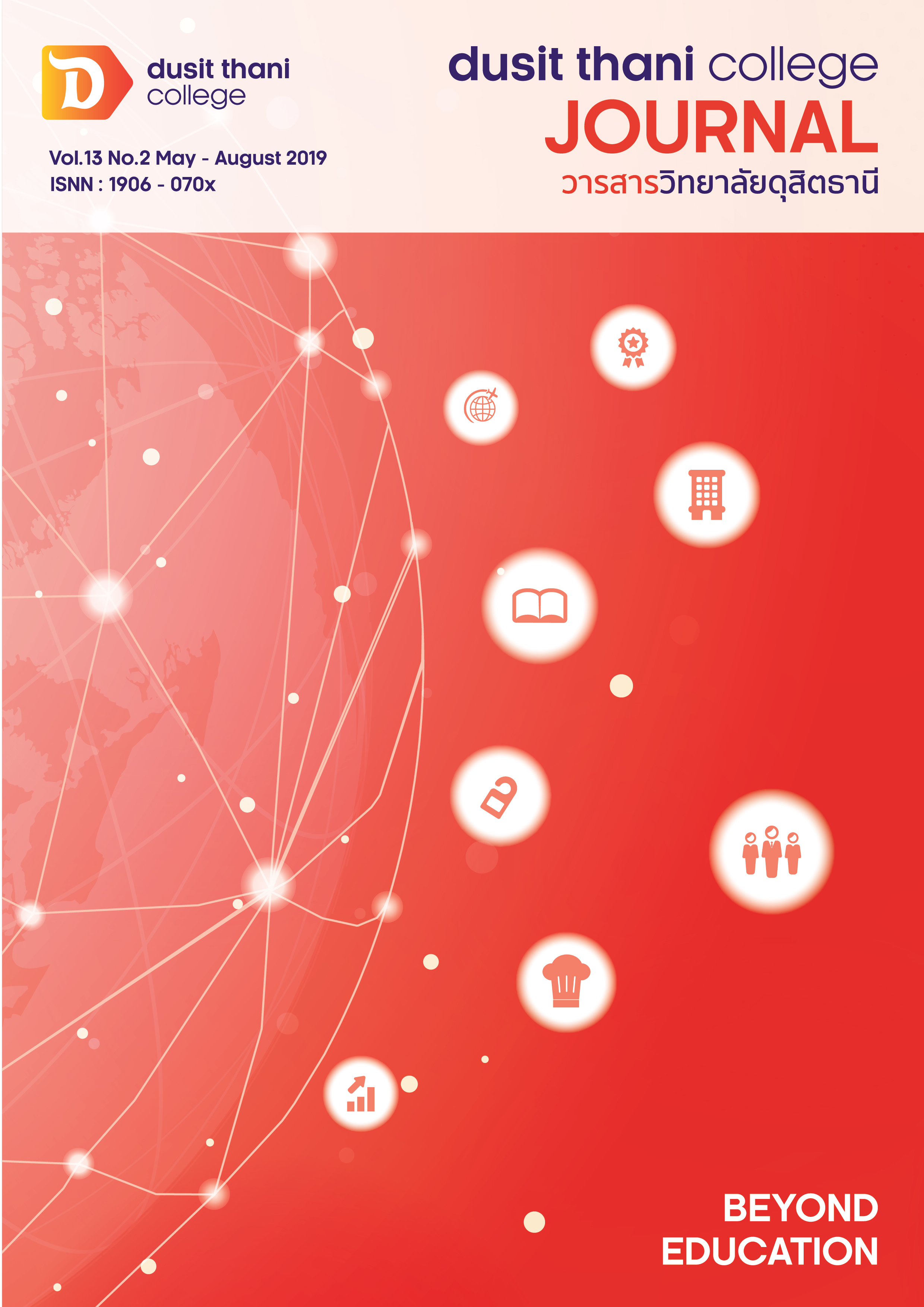Development Thai Healthy Recipes for Adolescent
Main Article Content
Abstract
This research aims to develop Thai Healthy Recipes for adolescent by calculating recommended energy and nutrients intake for the late teens in each meal. Data collected from sold foods at standard laboratory of food service, analyzed their nutritive values by INMUCAL program and selected curry, soup, stir-fried menus which contain high sugar, sodium and fat whereas low fiber for healthy recipes development by reducing seasoning and changing some raw material. Nutritive values between pre and post recipes development were statistically compared by paired t-test. The results showed that sugar and fat content of pre foods less than the criteria therefore sodium and fiber content were only focused. After 20 menus development, amount of sugar was decrease while fiber was increase (p<0.05). The 10 healthy food sets from 20 developed menus comprised brown rice, 2 side dishes and fruits were sensory tested with 9-point hedonic scale in 50 undergraduate student. Overall acceptability of the set 7 which consisted of brown rice, stir-fried eggplant with minced pork, Chinese white radish soup with minced pork, and oranges was 7.59±0.97 (between like moderately and like very much) higher than the other (p<0.05). The study showed that developed healthy recipes (reduced sugar, fat, and sodium whereas increased fiber) were acceptable from undergraduate students which may be benefit to their nutritional status in the future.
Article Details
Article Screening Policy
- All research and academic articles to be published must be considered and screened by three peer reviews in the relevant field / article.
- All articles, texts, illustrations and tables published in the journal are the personal opinions of the authors. Editors don't always have to agree. And no responsibility whatsoever is the sole responsibility of the author.
- The articles to be published must never be published. Where did you first publish? And not in the consideration of other journals If the audit found that there has been a duplicate publication It is the sole responsibility of the author.
- Any article that the reader sees as being plagiarized or impersonated without reference. Or mislead the work of the author Please let the journal editor know it will be your greatest blessing.
References
2. Bootye, Chaniphan. (2012). Increasing consumption of fruits and vegetables. 1st.
The Printing Office Agency to assist veterans in Royal Shu patham.
3. Bootye Chaniphan and Nattapol Thangsupoom. (2016). Food and nutrition for working-class consumers and women. 1st. N.p.
4. Charoenkiekul, S. Watcharee D, Aitidtada B, Yenjai T and M Roumrak. (2005). Building Safety Thai Foods for the World (Development of Thai set menu for Health)
5. Cook, R.N., J.A. Cutler., E. Obarzanek., J.E. Julie., E Buring., K.M. Rexrode., S.K. Kumanvika., L.J. Appel and P.K. Whelton. (2007). Long term effects of dietary sodium reduction on cardiovascular disease outcomes: observational follow-up of the trials of hypertension prevention. BMJ 334:885.
6. Department of Disease Control. Ministry of Public Health. (2015). Annual Report 2015. The Printing Office Agency to assist veterans in Royal Shu patham.
7. Faculty of Medicine Siriraj Hospital. N.p. Nutrition for adolescent. http://www.si.mahidol.ac.th/sidoctor/e-pl/admin/article_files/1287_1.pdf
(Accessed June 7, 2018).
8. He, F.J. and G. MacGregor. (2011). Salt reduction lowers cardiovascular risk: meta-analysis of outcome trials. Lancet. 378: 380-382.
9. Institute of Liver and Digestive Diseases Samitvej Hospital. (2010). Dietary fiber...the benefits of nature. The Wisdom 64-65.
10. Jongviriyaphan, N. R Tantiphatayanggoon and Naruemol Densarpsountorn. (2012).
Nutrition in Children and teens. 1st. Beyond Enterprize Company.
11. Kiangsinyout, W. (2012). Reduce sodium prolongs life. The Printing Office Agency to assist veterans in Royal Shu patham.
12. Methven, L., E. Langreney and J. Prescott. (2012). Changes in liking for a no added salt soup as a function of exposure. Food Quality and Preference 26:135-140.
13. Mirmiran, P., N. Noorin., M.B. Zavareh and F. Azizi. (2009). Fruit and vegetable consumption and risk factors for cardiovascular disease. Metabolism Clinical and Experimental 58:460-468.
14. Pitukwapee, K. (2013). Catering Arrangement. http://krukaewthaicooking.blogspot.com/2013/06/blog-post_515.html
(Accessed June 7, 2018).
15. Thai Health Promotion Foundation. (2012). The “fiber” who does not matter. http://medinfo2.psu.ac.th/cancer/db/news_showpic.php?newsID=850&tyep_ID=2., (Accessed March 31, 2018).


